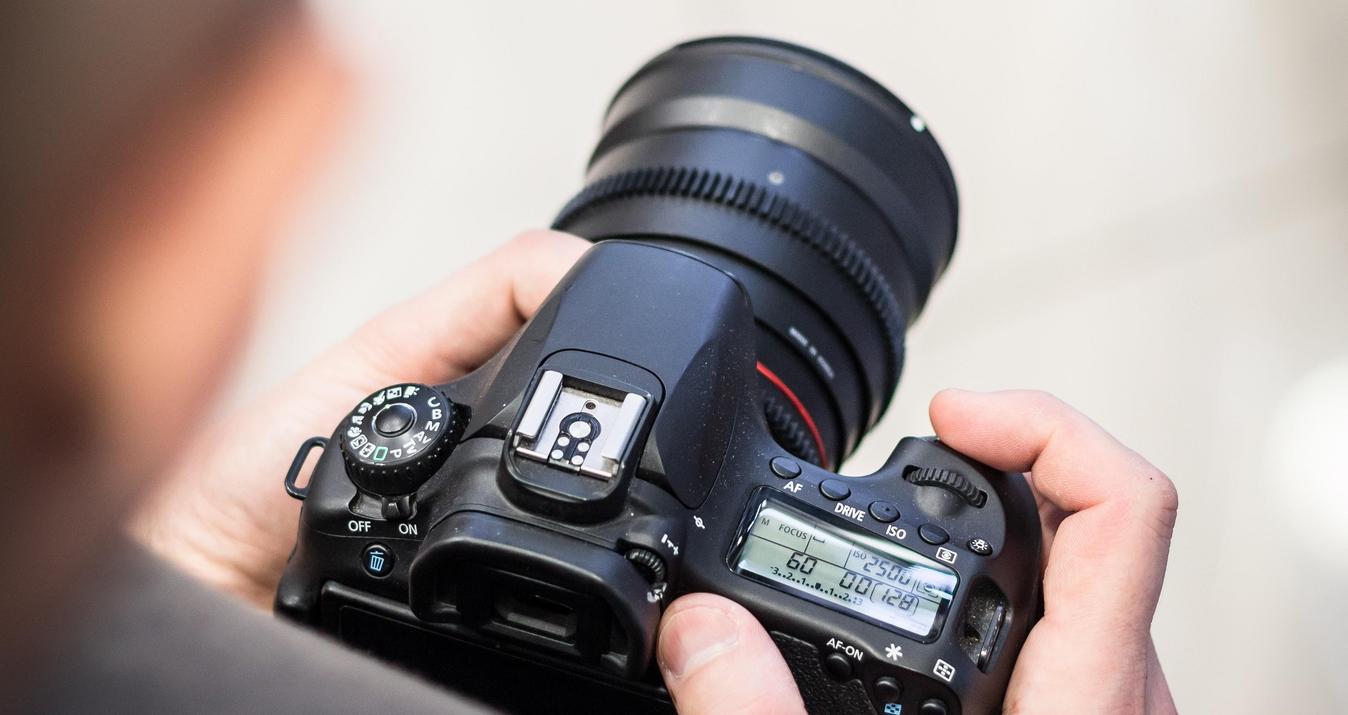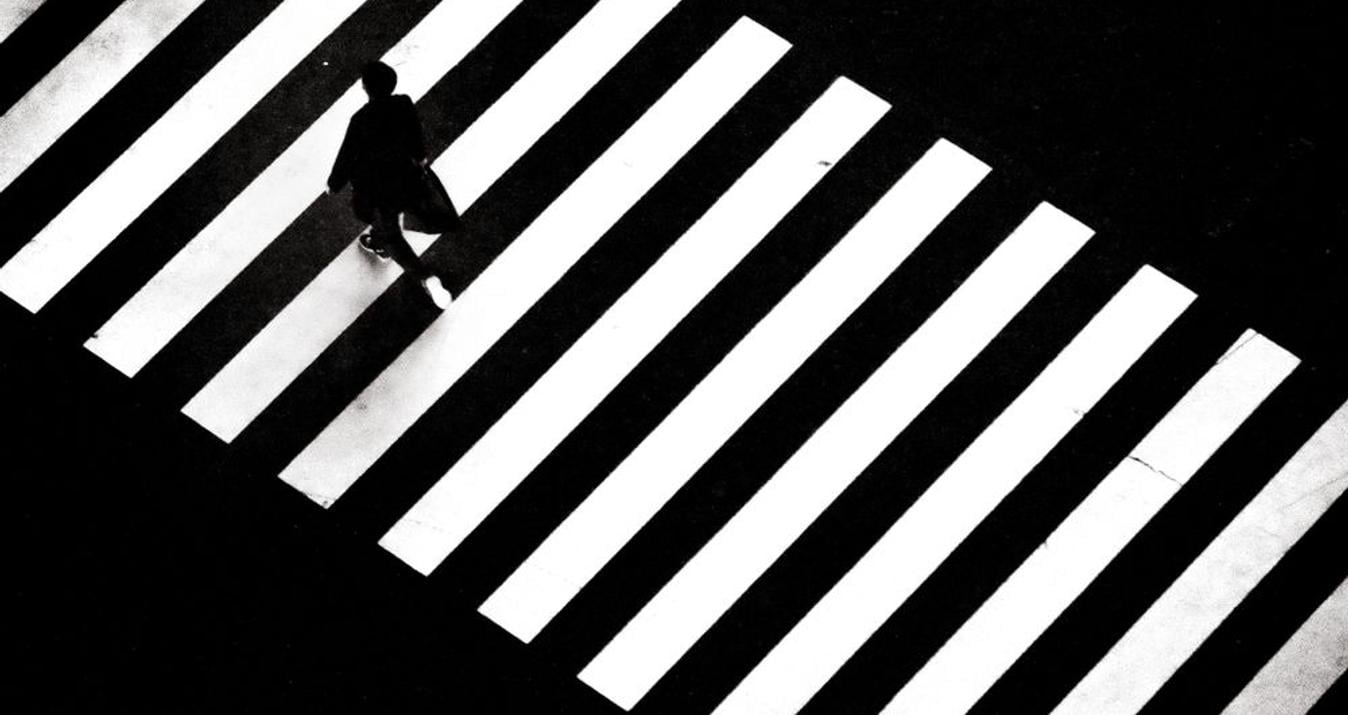Learn Expert Techniques For Long Exposures, Creating Silky-smooth Water Effects, And Conveying The Dynamic Energy Of Waterfalls Through Your Lens.
So, you're surfing the Internet to learn how to take a waterfall picture. Your search ends here! We're excited to share that we've compiled a comprehensive photography guide for this purpose. It is appropriate for photographers of any level looking for helpful tips.
In this guide, you'll discover how to adapt your camera to various situations; understand which settings are optimal for photographing the smooth, silky water surface, and which ones work best to highlight the force of a vast waterfall.
Also, we'll delve into post-processing. Besides discussing well-known software, we'll also introduce you to an advanced tool called Luminar Neo. This program employs artificial intelligence to streamline the photo editing process.
There's no time to wait! Let's embark on your journey to craft breathtaking waterfall photographs!
Some Basics to Know
When photographing waterfalls, it's important to understand that every waterfall is unique. So the approach to capturing images may vary from one to another.
Mastering waterfall photography involves a combination of technical knowledge and artistic perspective. From selecting the right location and angle to understanding the appropriate waterfall photography settings, each step contributes to the final result. Other factors like the time of day, weather conditions, and even the surrounding landscape can significantly impact your final result.
Indeed, having the right equipment and an understanding of how to use it effectively are fundamental aspects of waterfall photography. So, let's break down the key components.
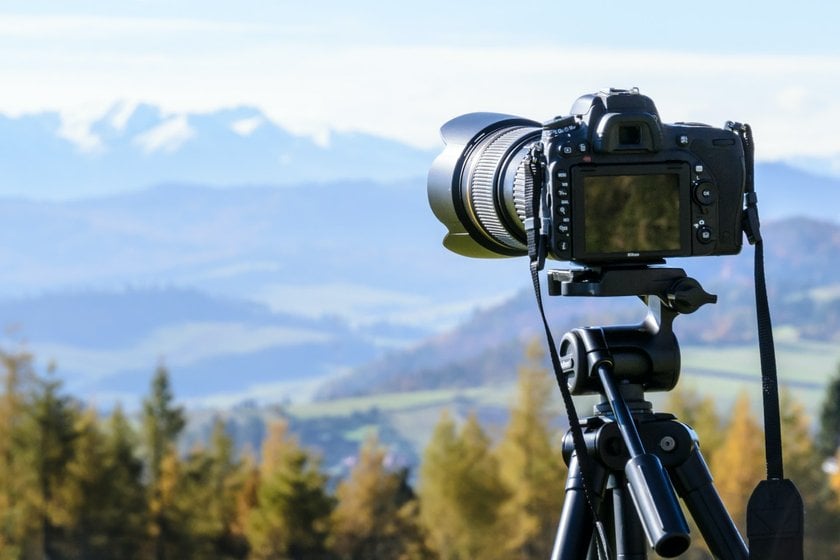
Essential Equipment
Camera: Choose a DSLR or mirrorless camera with high resolution and good low-light performance. Also, make sure it is allowed for manual control over basic settings.
Lens: The choice is necessary based on your desired composition. Usually, a wide-angle lens is good for the entire scene, and a telephoto lens—for focusing on a specific waterfall section.
Tripod: This is essential for high-quality images. A tripod is especially useful when shooting a waterfall with a long shutter speed as it eliminates camera shake, ensuring sharp images even at slow shutter speeds.
Key Camera Settings for Waterfall Photography
Shutter Speed: This setting controls how long the sensor of your camera is exposed to light. Fast shutter speeds can freeze the water's motion, giving you a crystal-clear image. Slow shutter speeds, on the other hand, create the effect of a silky, flowing waterfall.
Aperture (f-stop): This setting controls how much light enters your camera. A smaller aperture (higher f-stop number like f/11 or f/16) lets in less light but increases the depth of field, keeping both the waterfall and the surrounding landscape in focus.
ISO: This setting affects your camera's sensitivity to light. Lower ISO settings (like 100 or 200) mean less sensitivity to light, which reduces noise or graininess in the shot. However, in darker conditions, you may need to increase the ISO to allow your camera to capture more light. Remember, though, higher ISO settings can lead to more image noise.
By understanding these camera settings and using appropriate equipment, you'll be well-equipped to capture stunning, professional-quality waterfall photos.
How to Achieve a Milky Waterfall Effect
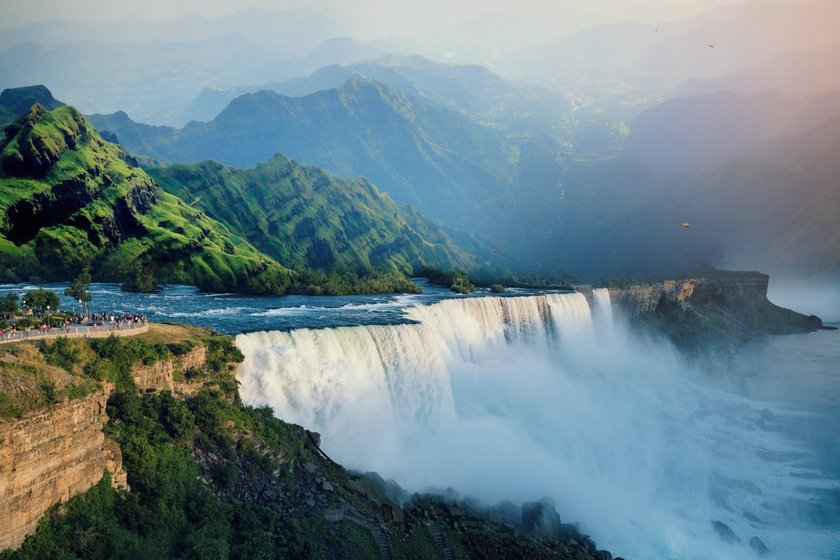
Long-exposure photography is a favorite technique among photographers for waterfalls. This method, often called "slow shutter waterfall" photography, allows you to depict water flow dreamily.
As you might have guessed, the secret to achieving this effect is using a slow shutter speed. During this, your camera's sensor is exposed to moving water for longer, causing the water's motion to blur. It creates the characteristic silky-smooth effect often seen in professional waterfall photographs.
But it's not just about setting a slower shutter speed. Additionally, you may need to adjust other camera settings to compensate for the increased light entering the camera. This might include narrowing your aperture or reducing your ISO.
It's also worth noting that neutral density filters can be useful in these situations, as they reduce the amount of light entering the lens without affecting the image's color, allowing for slower shutter speeds even in brighter conditions.
As you experiment with slow shutter waterfall techniques, remember that each waterfall and lighting condition is distinct and requires different settings. With time, patience, and practice, you'll be able to capture any waterfall!
How to Photograph a Waterfall in Dynamic
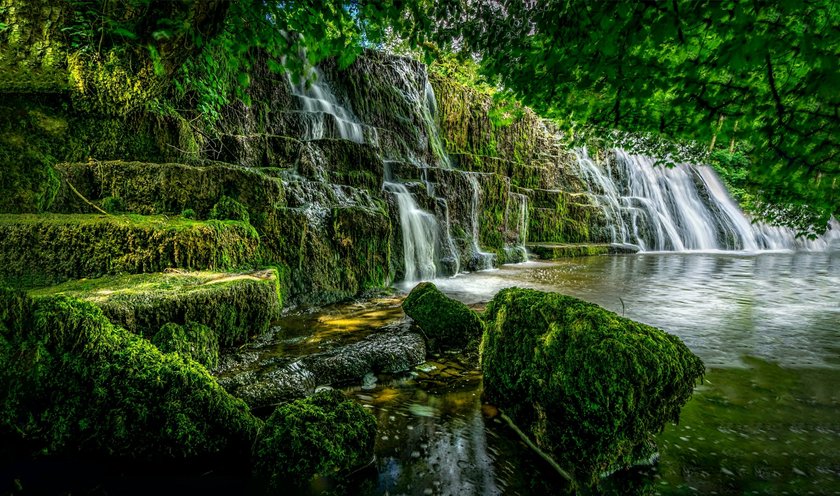
You can freeze the water in motion rather than blur it using a faster shutter speed, highlighting individual droplets and streams of water, providing your images with a sense of immediacy and vitality. This technique can be as captivating as long exposure shots with the right lighting and composition.
Balancing your camera settings is the challenge here. A faster shutter speed will need more light, so you might have to widen your aperture or increase your ISO for a well-exposed image. Additionally, experimenting with various perspectives and angles can dramatically enhance the energy and grandeur of the waterfall in your shots.
Whether you choose to capture the tranquil flow or dynamic energy of a waterfall, the ultimate goal is to create a photograph that encapsulates your unique vision and interpretation of the scene.
To assist you in bringing this vision to life during post-processing, we'll introduce you to Luminar Neo in the next section!
Harness the Power of AI with Luminar Neo
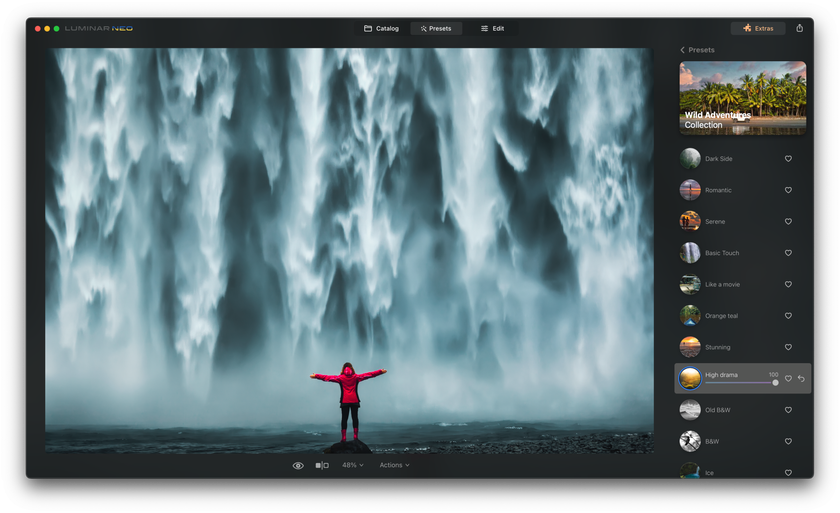
Are you eager to elevate your waterfall photography? Look no further than Luminar Neo. This AI-powered photo editor is designed to streamline your photo editing process while adding a professional touch.
Here's what Luminar Neo brings to your editing table:
- AI-Driven Detail Enhancement: Luminar Neo identifies and enhances areas in your photo that need additional detail or clarity, doing the heavy lifting for you and saving precious editing time.
- Dynamic Sky Replacement: Is the sky in your image lacking excitement? With just a few clicks, Luminar Neo can substitute it with a more dramatic one, transforming the overall mood of your photograph.
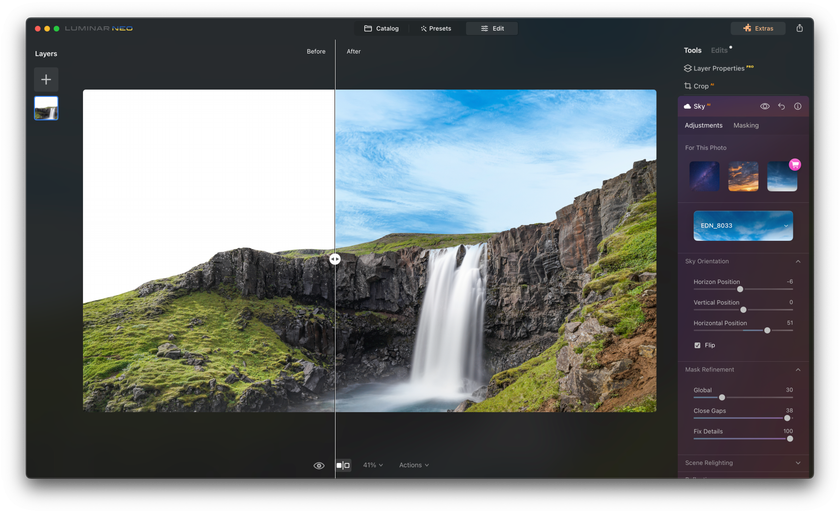
- Relight Feature for Balanced Scenes: For waterfall photographs, achieving the perfect lighting balance is crucial. Luminar Neo's 'Relight' feature allows you to adjust the lighting in your photo, ensuring the waterfall and its surrounding scene blend harmoniously.
- Sunray Tool: This feature can help you enhance the atmospheric feel and overall drama of your waterfall shots by adding realistic sun rays.
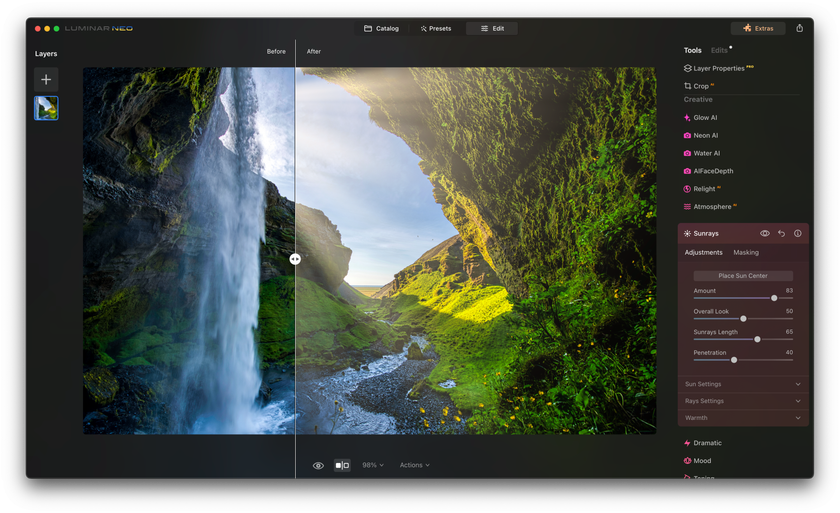
- Conventional Editing Tools: Beyond its AI capabilities, Luminar Neo also offers essential editing tools. From cropping and color correction to noise reduction, it packs all the functionalities you'd expect from a leading photo editor.
By incorporating Luminar Neo into your editing workflow, you can tap into the power of AI, making the process faster and more intuitive while enhancing the quality and impact of your waterfall photos.
Advanced yet easy-to-use photo editor
Get Luminar Neo NowPost-Processing Techniques
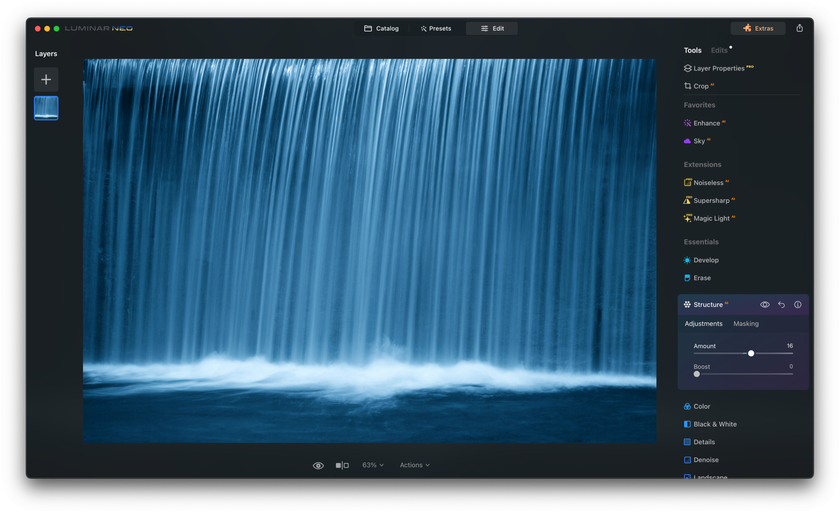
Editing is a crucial part of photography. It's where you can add your own artistic touches and really make your waterfall photos shine. There are several techniques that can help enhance your images, and with tools like Luminar Neo, the process is easier than ever!
- Exposure and Contrast Adjustment: The first step is usually to adjust exposure and contrast to bring out image details and add depth. Increase shadows for darker images to reveal more detail, and adjust highlights to prevent overexposure in brighter images. This is where our AI-powered Photo Contrast Enhancer comes in handy.
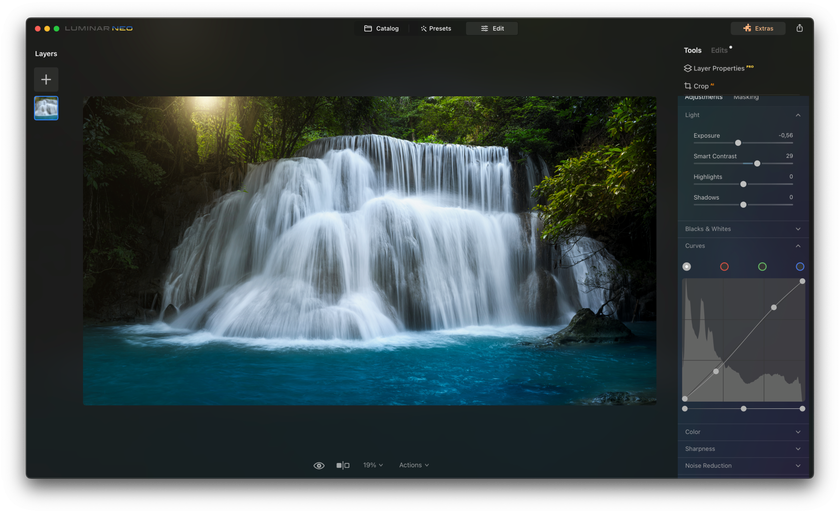
- Color Adjustment: This basic but powerful tool can significantly enhance your images. Boosting saturation can make colors pop, but it's important not to overdo it. Also, adjusting the temperature and tint can influence the overall mood of your image. To save a lot of effort, you can turn to Luminar Neo again. Its Enhance AI tool makes all of these adjustments in one click, without exaggeration.
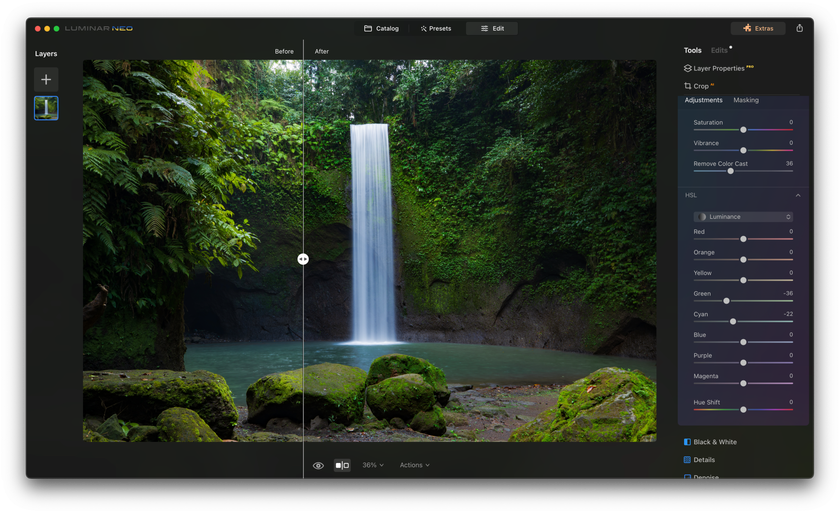
- Enhancing Motion in Water: An advanced technique for waterfall images is to enhance the sense of motion. And here, Luminar Neo allows you to add a slight motion blur in post-processing to mimic the effect of a slower shutter speed.
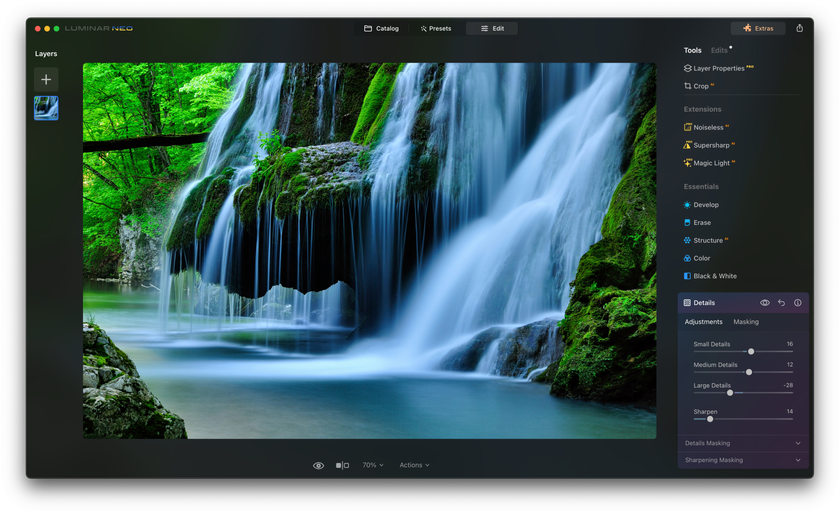
- Cropping the Image: Sometimes, cropping a photo can drastically change its composition and make it more balanced and appealing. Experiment with different crops to see what works best for your photo. To save time, you can use the Composition AI tool. It will easily find the best look for your photo.
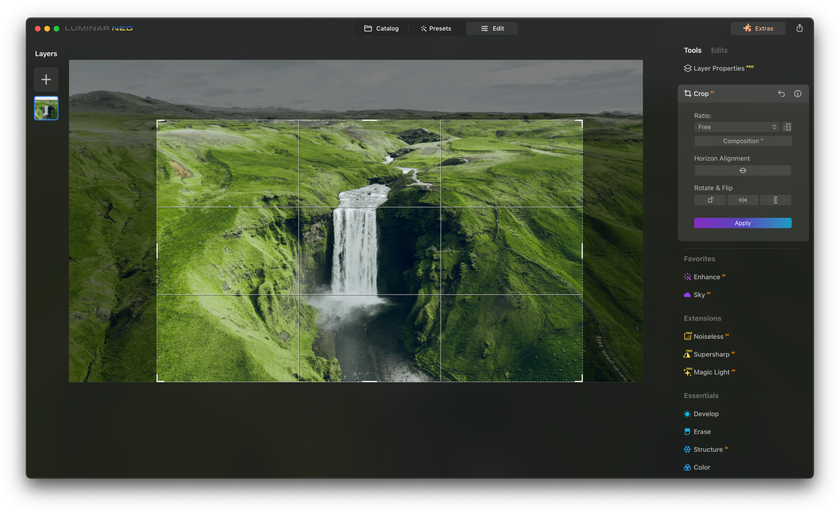
Remember, the goal of post-processing is to enhance the beauty of your photo without making it look overly edited. Practice and experimentation will help you find your unique style!
Conclusion
Photographing a waterfall is an exciting blend of adventure and artistry. This guide as your waterfall photography will help you to capture these natural wonders beautifully!
Each waterfall and lighting condition is a chance to experiment and improve your skills. So keep practicing, keep exploring, and most importantly, enjoy the journey of waterfall photography.
Happy shooting!






